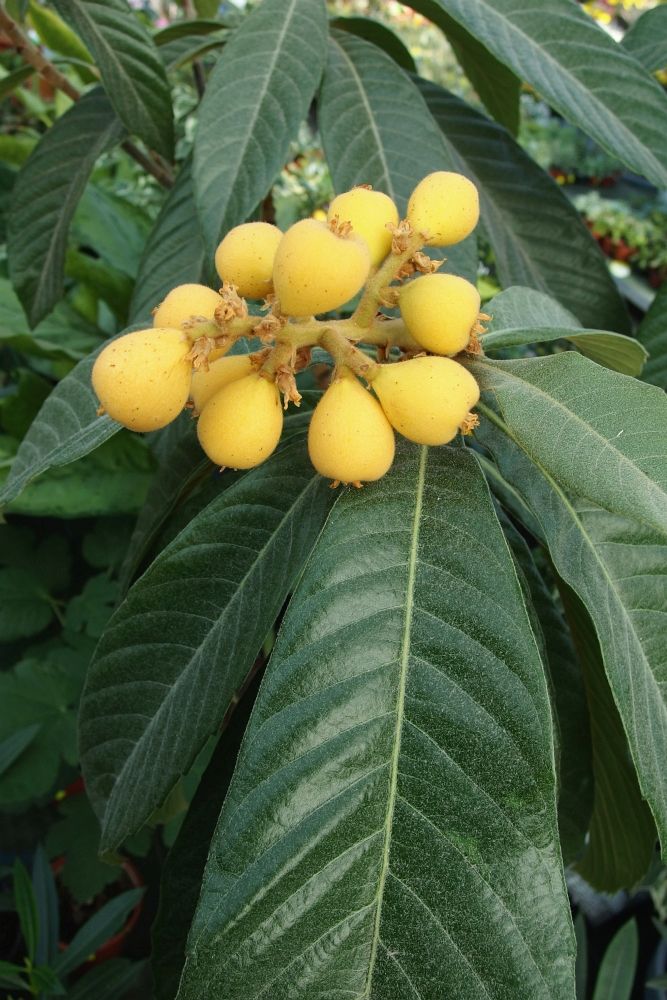Eriobotrya japonica
English names: Loquat/Japanese medlar
Latin name: Eriobotrya japonica
Family: Rose - Rosaceae
Origin: South and east China
The loquat or Japanese medlar is a large shrub or small tree with a spherical crown. The tree can reach a height of five to ten metres, but is usually shorter, about three to four metres. The trunk is short and moss grows thickly on its young branches. The leaves are simple, evergreen, alternate, and elongated, growing to a length of 10 to 25 cm. The leaf blade is thick, leathery and serrated on the edge. The underside of the leaf is covered with dense, yellow-brown tomentum (felt-like covering). A similar pubescence marks young leaves on the upper side, but they lose this quickly. The flowers are approximately two centimetres in diameter, with white petals, appearing on panicles of three to ten flowers. These entomophilous flowers (i.e., with evolved mechanisms to attract insects) draw bees and wasps with a sweet, heavy aroma that is perceptible from a distance. The fruits, usually grouped in a few seed heads, are slightly pear-shaped. They are three to five cm. long, smooth or downy, yellow or orange, sometimes with a red blush. Their juicy and aromatic pulp, usually yellow, is sweet with a slightly acidic or sour aftertaste. The five-chamber seed slot, at maturity, contains large brown seeds.
The plant is herbal material. The fruit syrup, with expectorant properties, is used in Chinese medicine as a cough syrup. The leaves, along with other ingredients, act as mucus-dissolving substances, which further reduce irritation of the digestive and respiratory tracts. As a medicinal preparation, it is also used in a light fruit wine. Due to its high simple sugar content and fruit pectin, it is compared to the apple. It may be eaten raw as a fruit dessert or as a salad, mixed with other fruits. Its firm, slightly immature fruits are suitable for cakes and pies. They are also often made into jams, jellies, and spicy sauces; it is also chopped and served with syrup. In Japan, the Medlar fruit is eaten raw or in the form of fruit pickle because its pulp is sweet. The processing includes the production of jellies and jams; wastage is around 30%, due to the high proportion of seeds.



